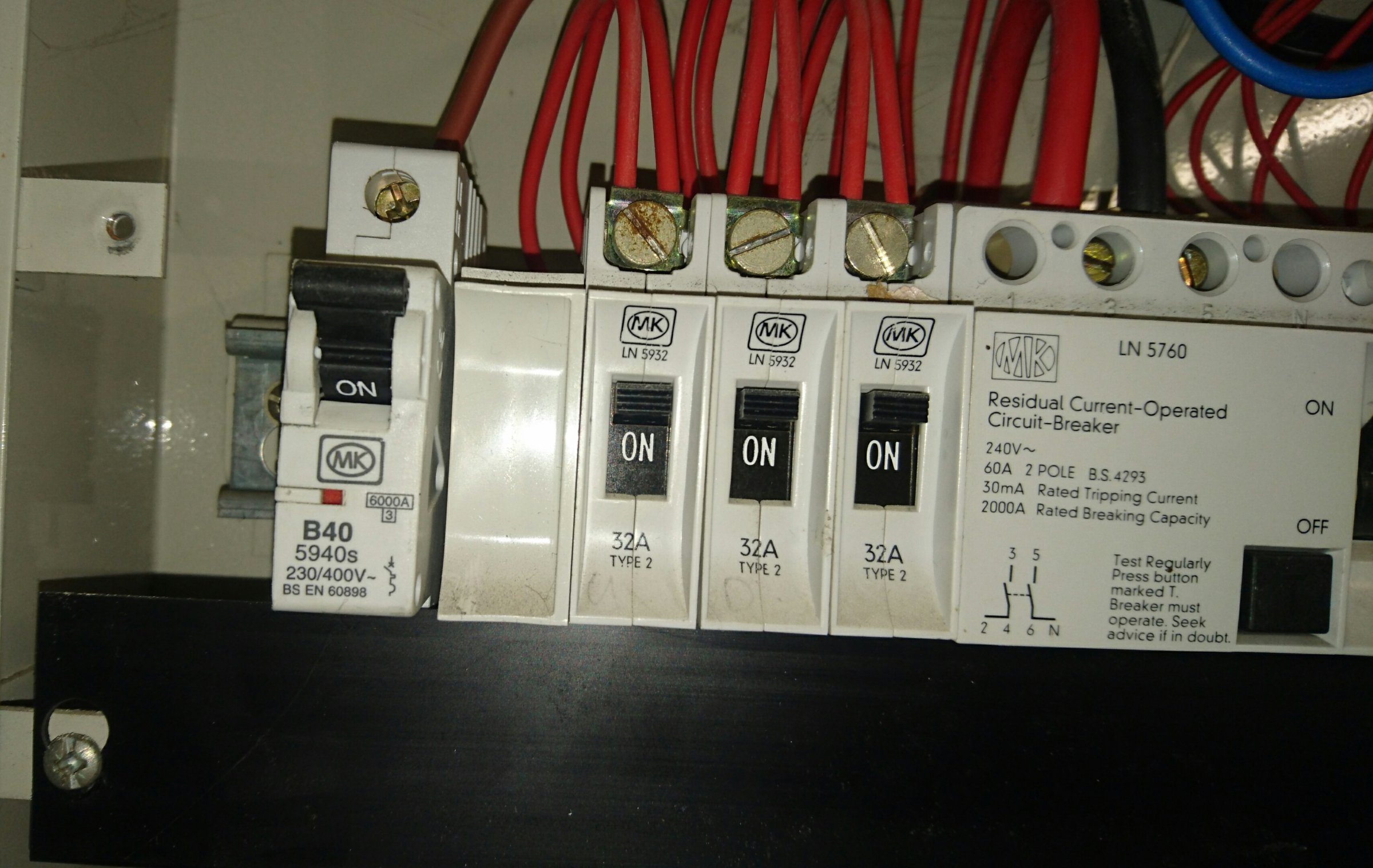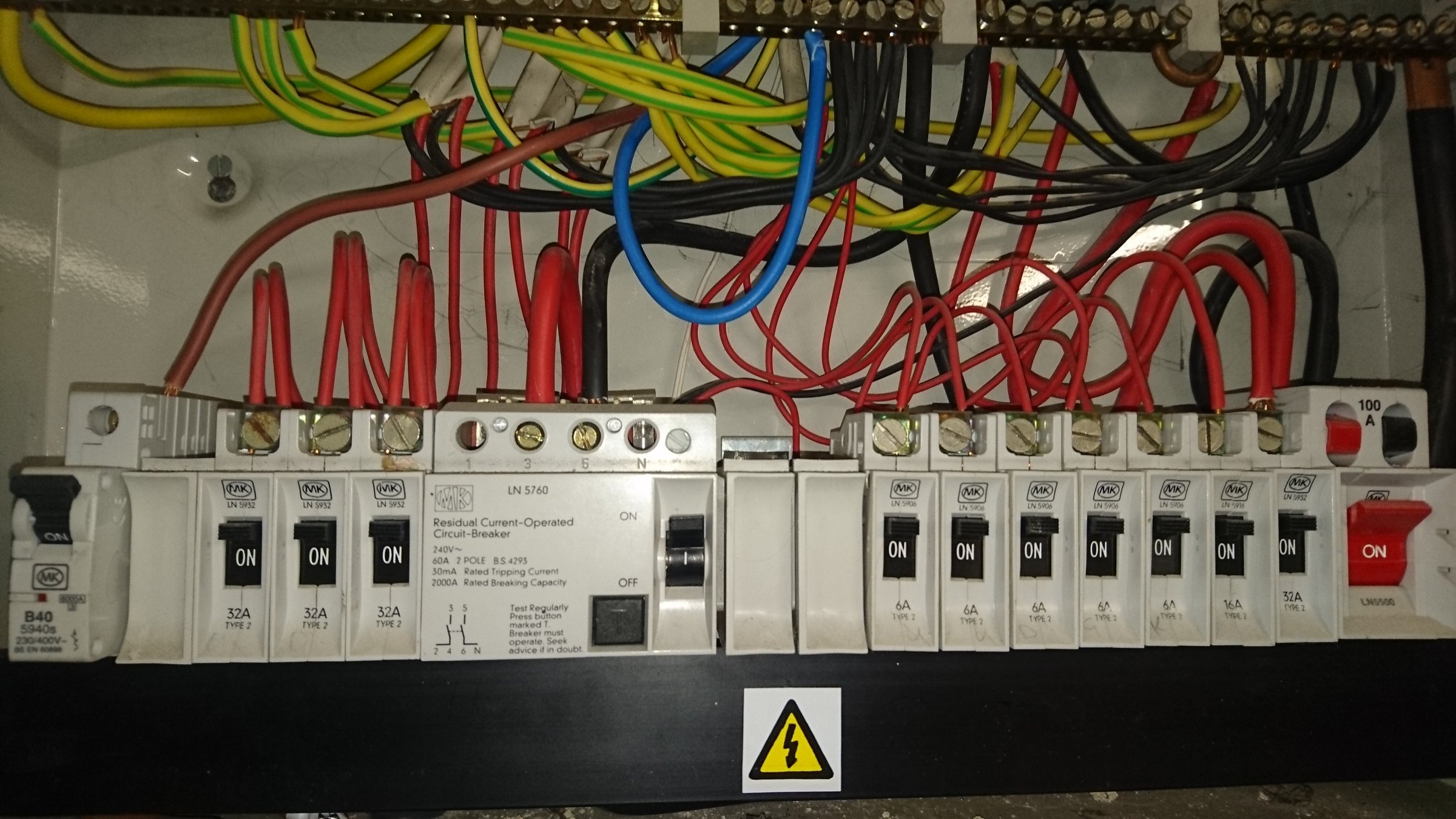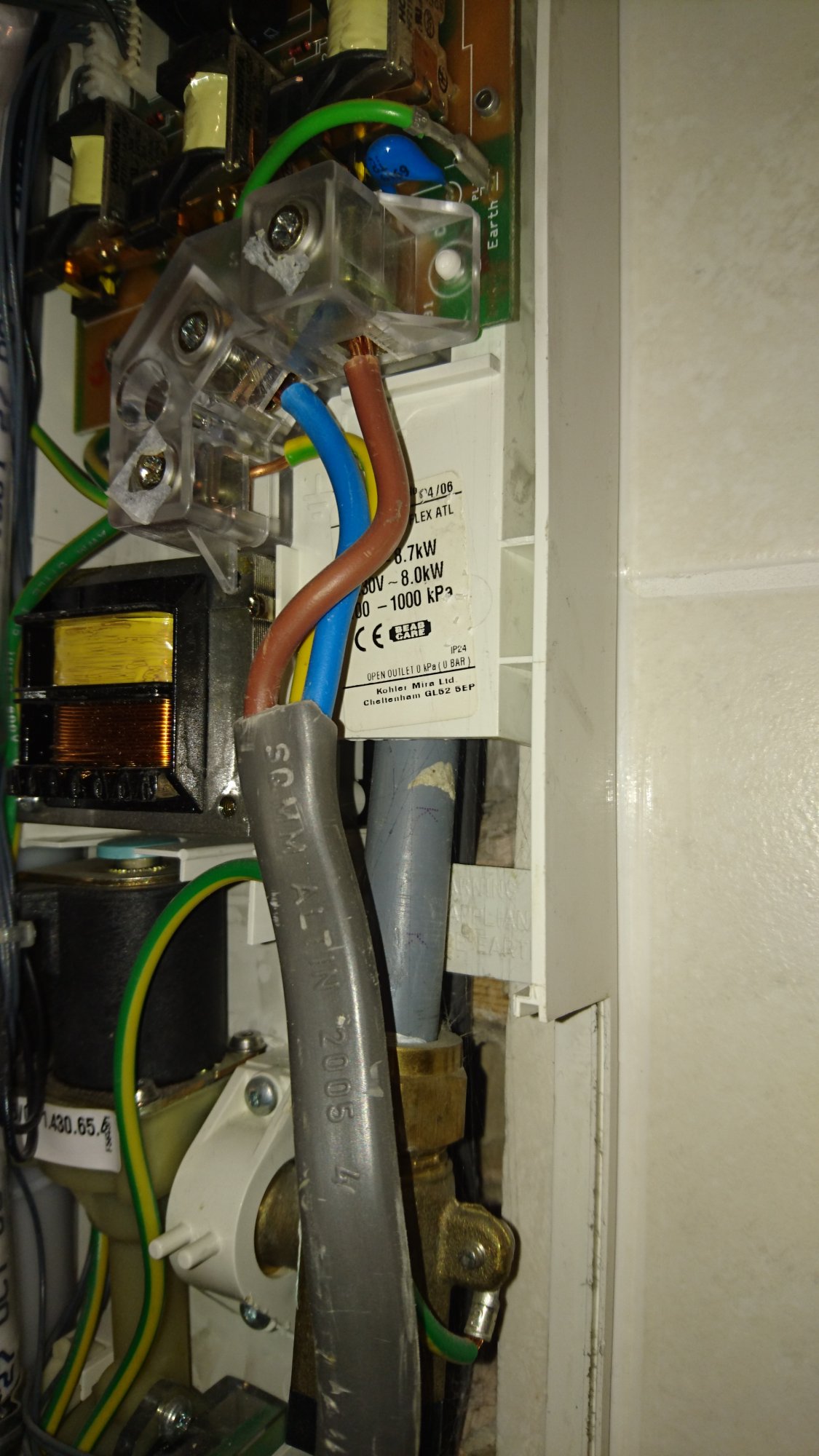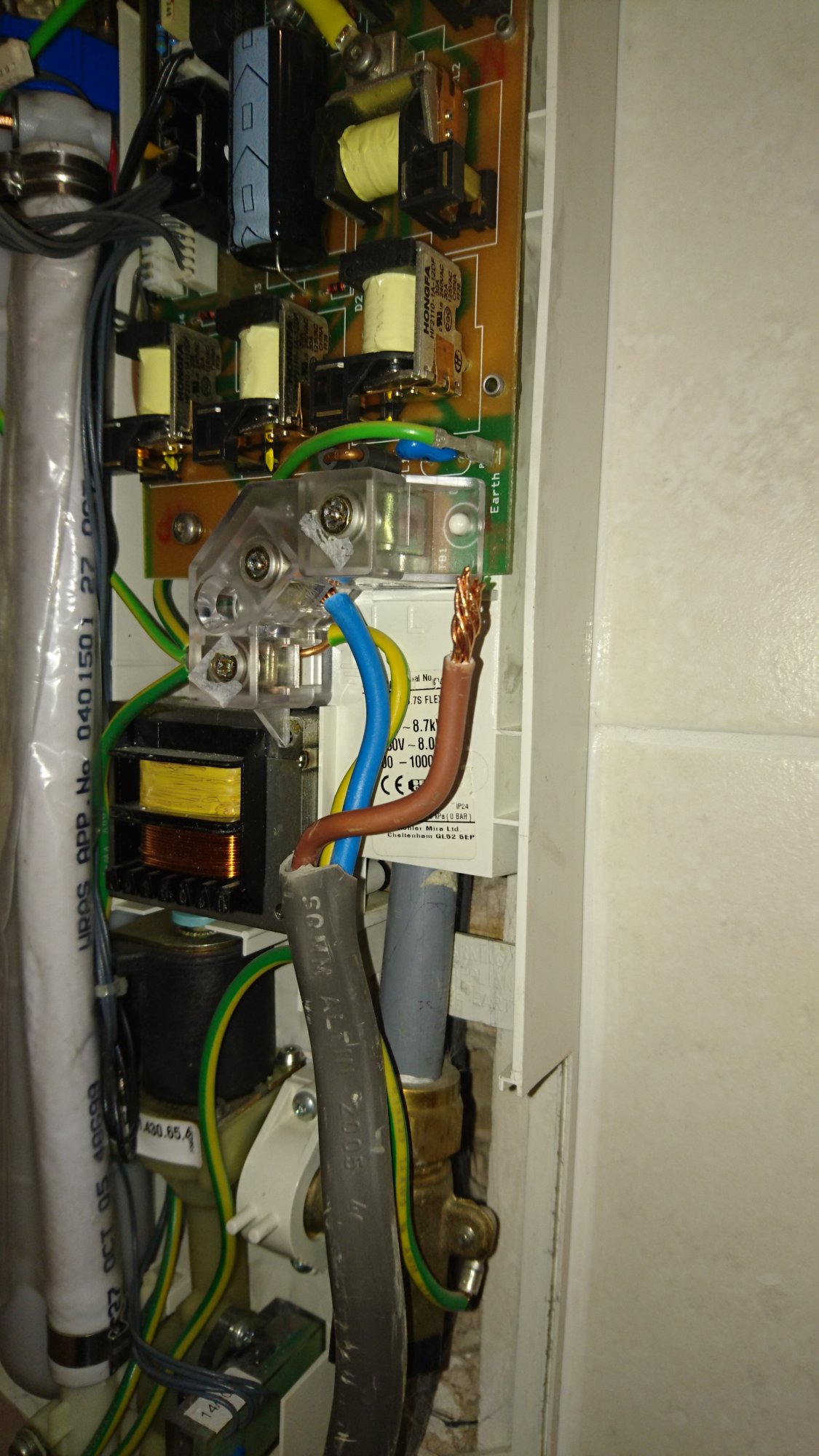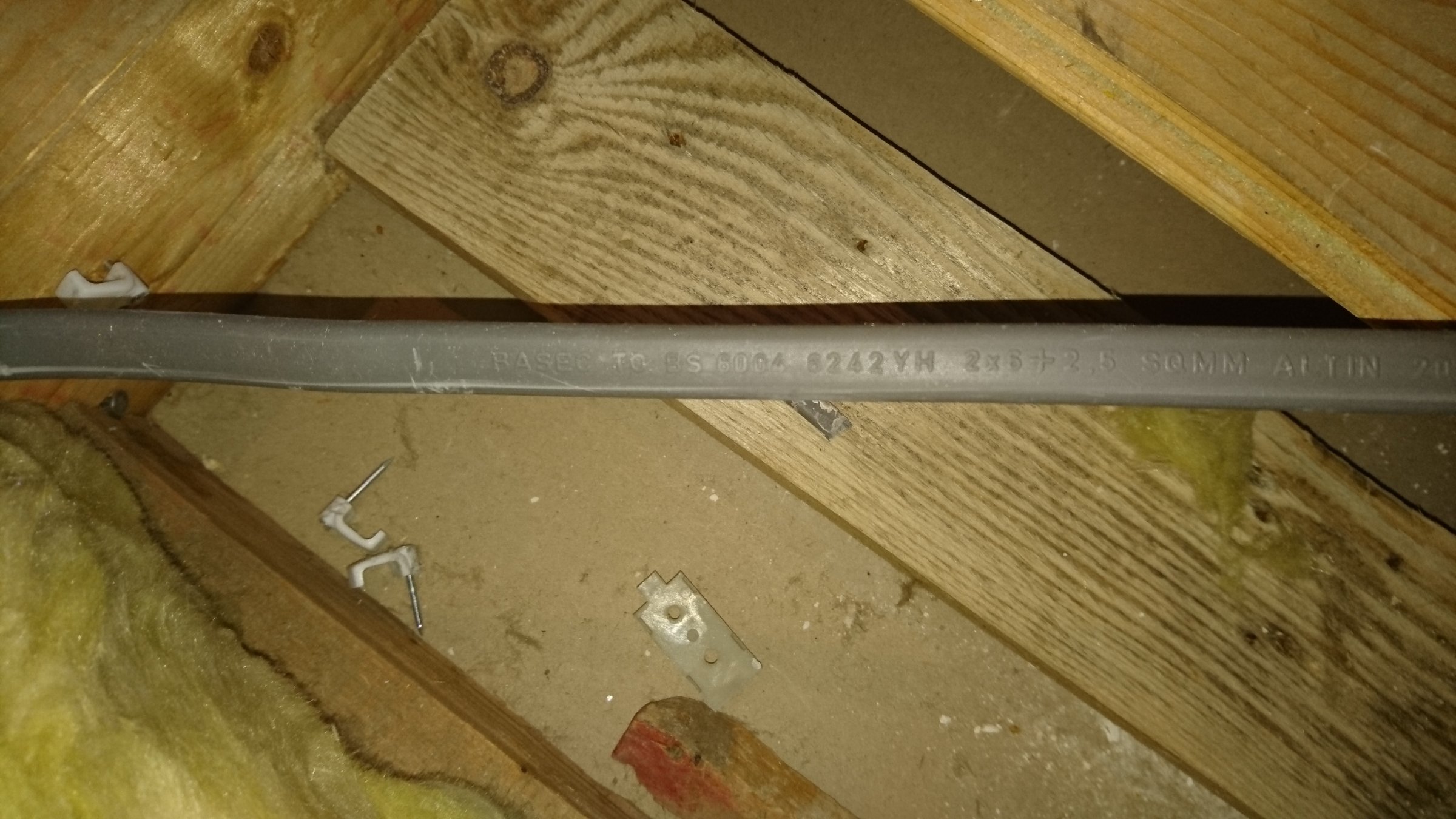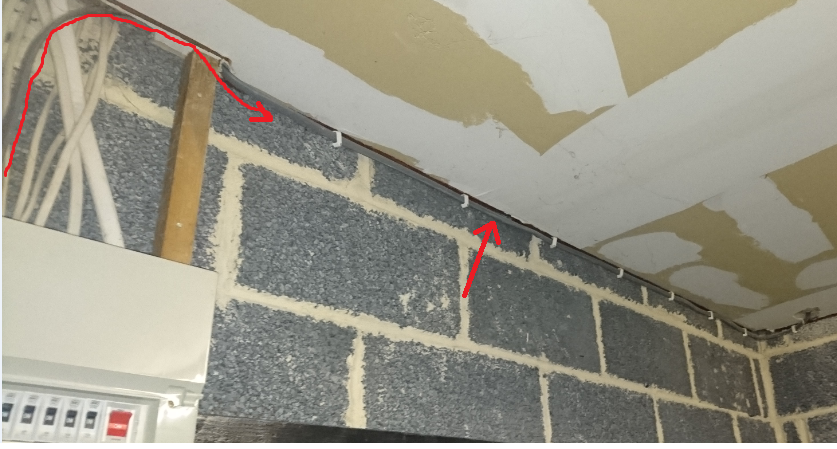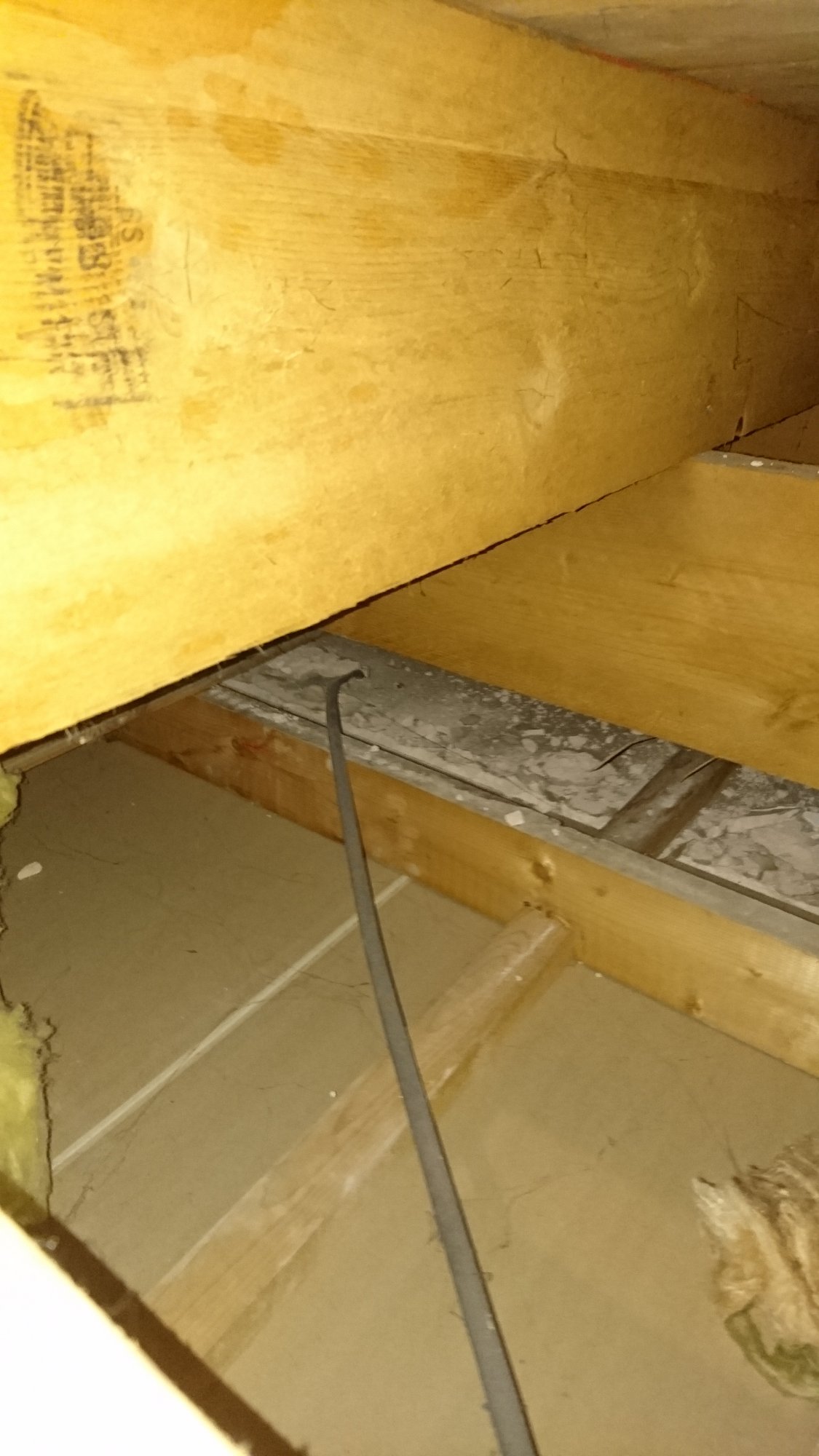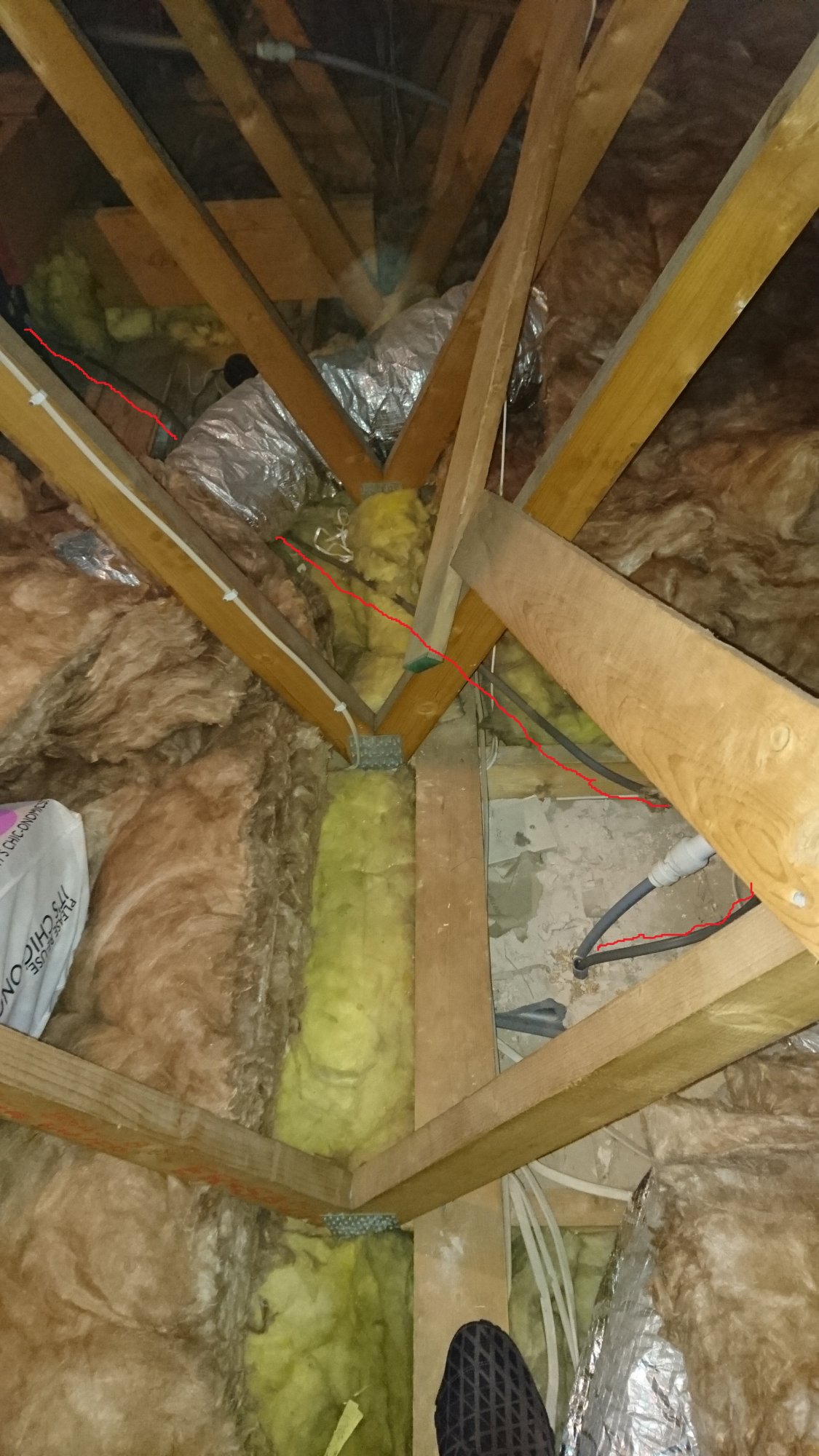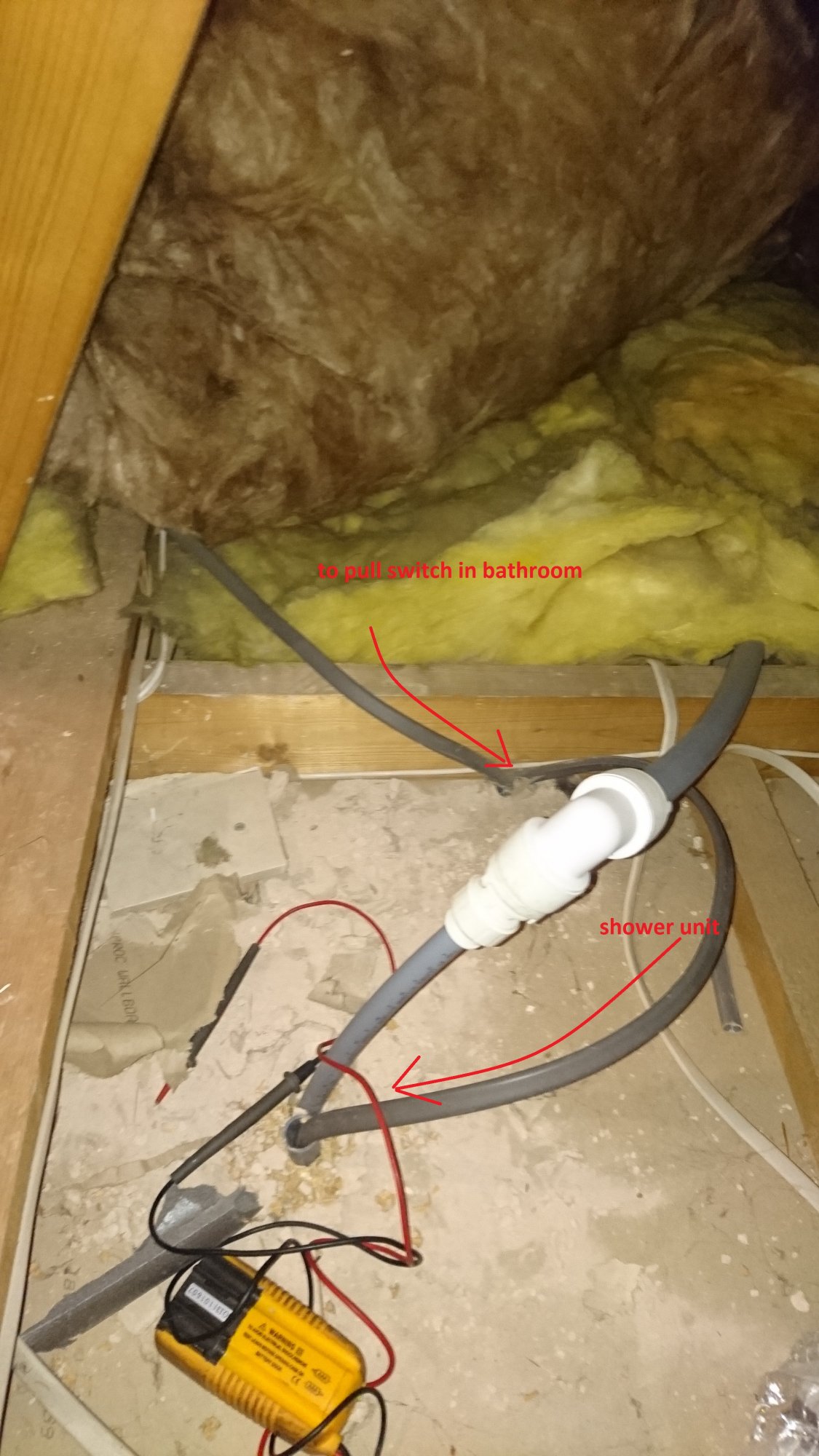My Mira electric shower recently packed up and im looking at getting it replaced with a new unit but would like a bit of advice before i buy a new unit.
The plumbing and wiring from the existing unit are all in place so im hoping that aside from any remedial work to re position the new unit and make good any exposed holes in the wall, that the replacement should be a fairly straight forward job.
The only significant difference between the old and new units is the old one is rated to 8.7kw and the new one is 9.8kw.
I believe the difference in power will have an impact on the wiring requirements so ive gathered a few pics to show what ive currently got in place:
40a circuit breaker at the CU (far left)
at the shower end ive taken a couple of pics of the cable where it terminates in the unit
also measured the approximate outside dimension across the cable which is approximately 14mm overall
Can anyone advise if what ive got is suitable for a straight replacement with a 9.8kw unit before i go and buy something to get fitted?
Thanks
The plumbing and wiring from the existing unit are all in place so im hoping that aside from any remedial work to re position the new unit and make good any exposed holes in the wall, that the replacement should be a fairly straight forward job.
The only significant difference between the old and new units is the old one is rated to 8.7kw and the new one is 9.8kw.
I believe the difference in power will have an impact on the wiring requirements so ive gathered a few pics to show what ive currently got in place:
40a circuit breaker at the CU (far left)
at the shower end ive taken a couple of pics of the cable where it terminates in the unit
also measured the approximate outside dimension across the cable which is approximately 14mm overall
Can anyone advise if what ive got is suitable for a straight replacement with a 9.8kw unit before i go and buy something to get fitted?
Thanks
Last edited:


